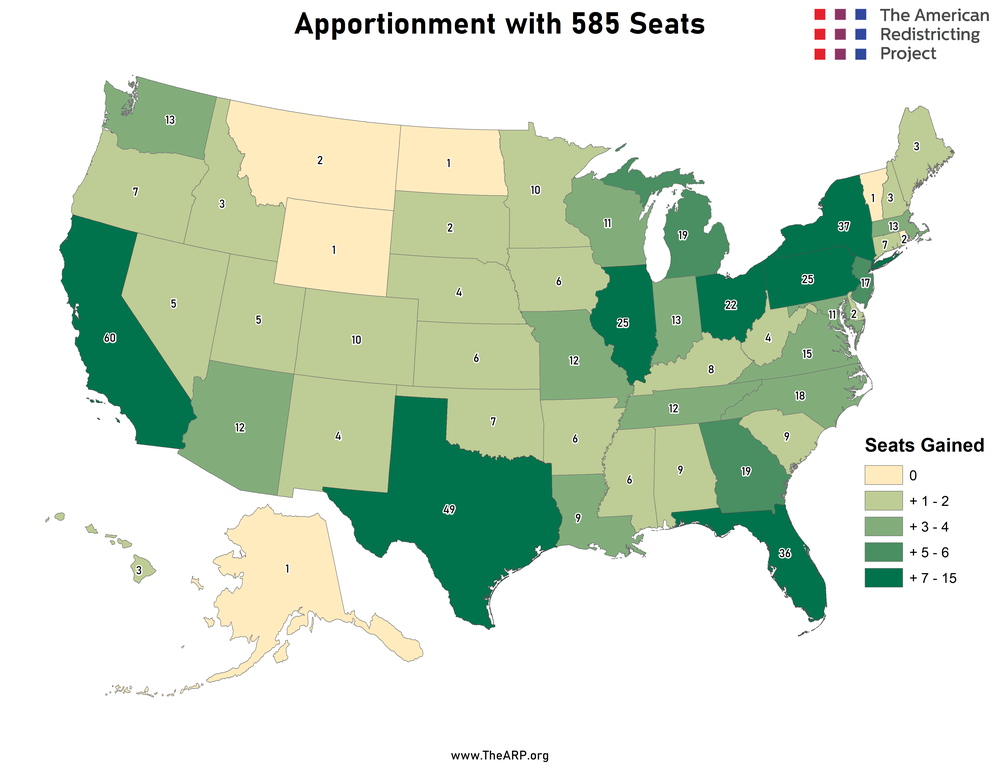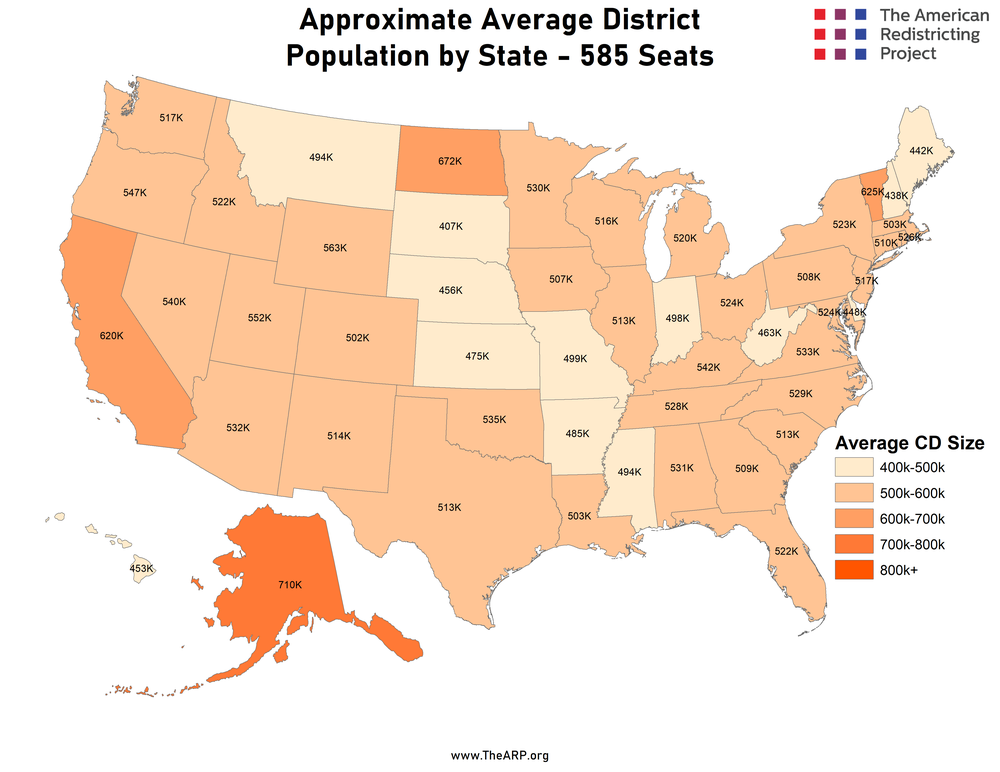The Restoring Equal and Accountable Legislators in the House Act , REAL House Act, would remove the cap of 435 total seats in the US House of Representatives in order to reduce the average congressional district size.

Number of Seats Gained by Expanding the House
| No Change | +1 | +2 | +3 | +4 | +5 | +6 | +7 | +8 | +11 |
|---|---|---|---|---|---|---|---|---|---|
| Alaska | Delaware | Alabama | Arizona | Indiana | Georgia | Michigan | Ohio | California | New York |
| Montana | Hawai'i | Arkansas | Louisiana | Massachusetts | New Jersey | Florida | Texas | ||
| North Dakota | Idaho | Colorado | Maryland | Missouri | Illinois | ||||
| Rhode Island | Maine | Conecticut | Tennessee | North Carolina | Pennslyvania | ||||
| Vermont | Nebraska | Iowa | Washington | Virginia | |||||
| Wyoming | Nevada | Kansas | Wisconsin | ||||||
| New Hampshire | Kentucky | ||||||||
| New Mexico | Minnesota | ||||||||
| Oregon | Mississippi | ||||||||
| Utah | Oklahoma | ||||||||
| South Carolina | |||||||||
| West Virginia |
The two following maps show the approximate congressional district size by state with both 435 and 585 seats. By increasing the size of the house the deviations between the sizes of seats are minimized.

With 435 seats the House has an average district size of roughly 751,000, but by increasing the house to the proposed 585 the average district size shrinks to 519,000.

